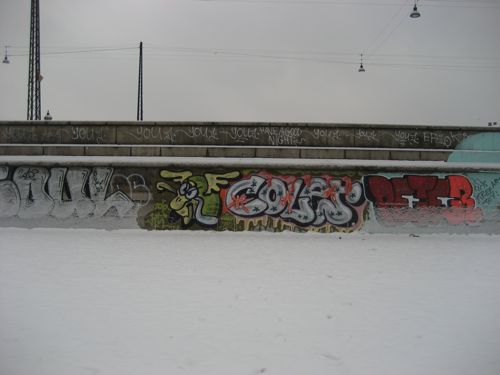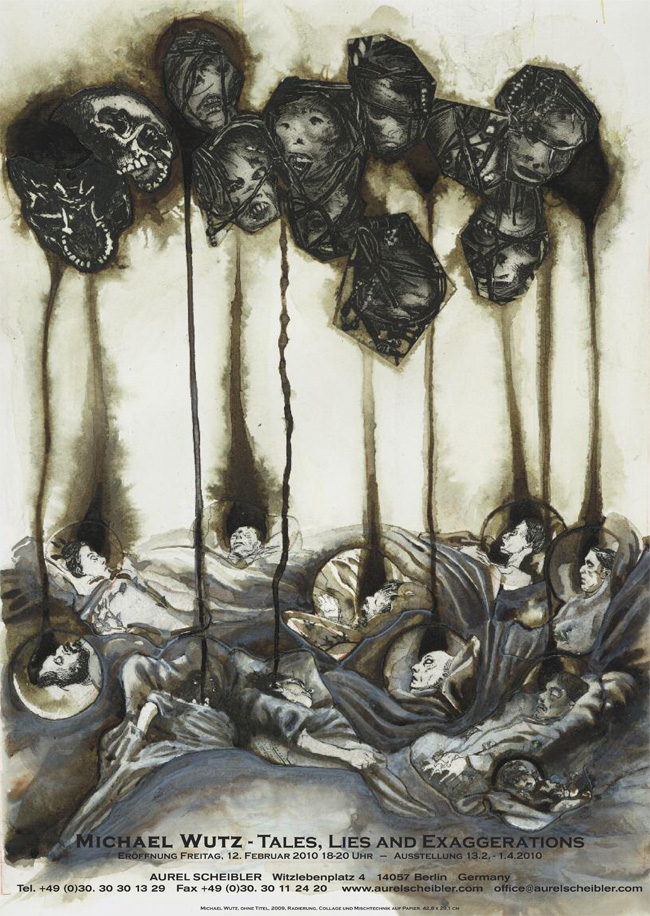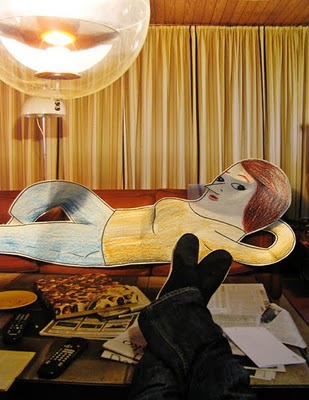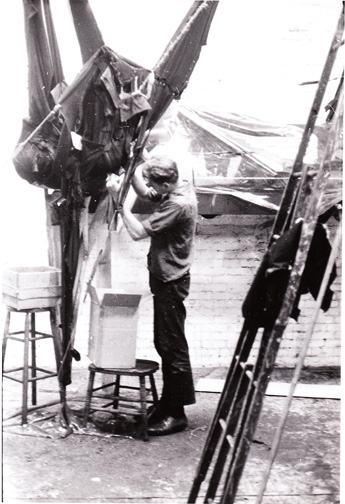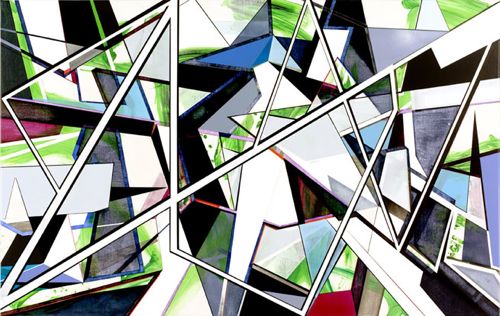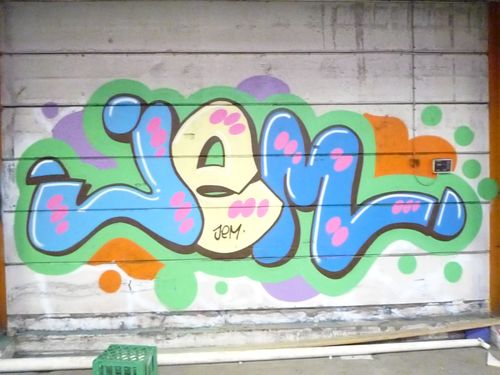
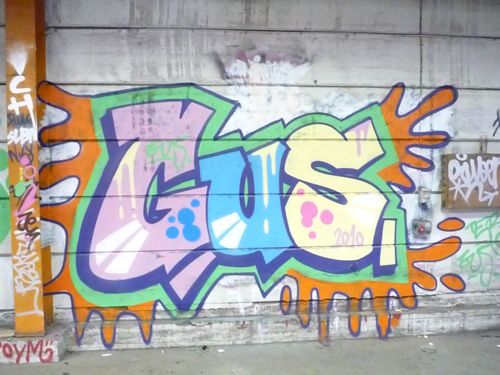
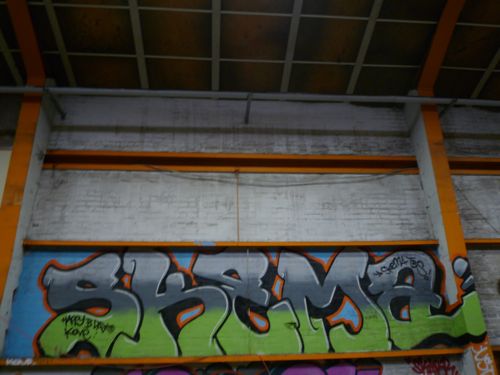
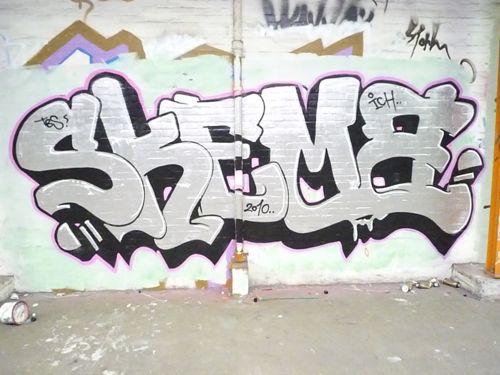
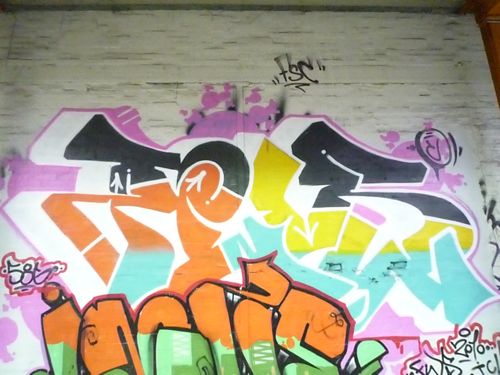
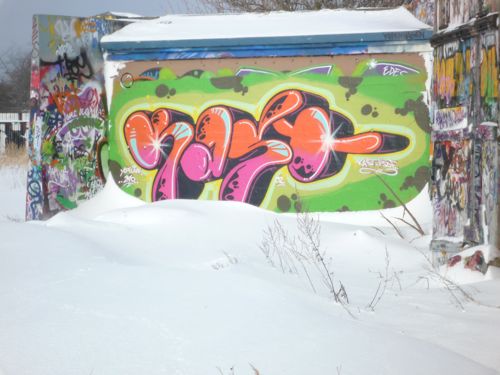
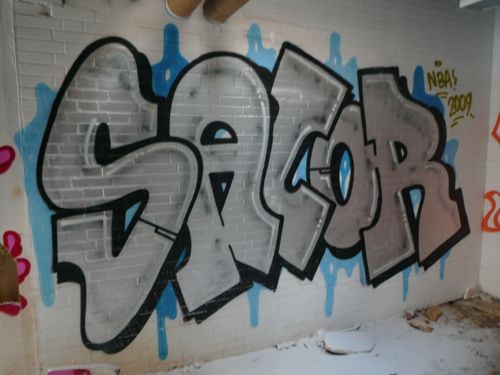
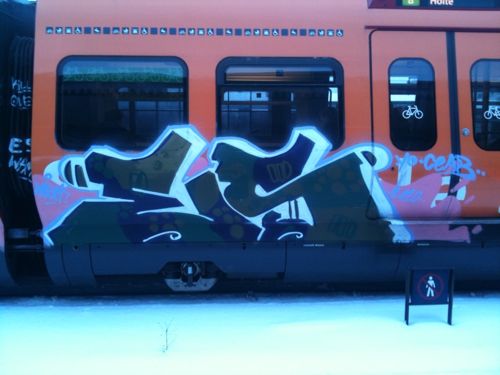
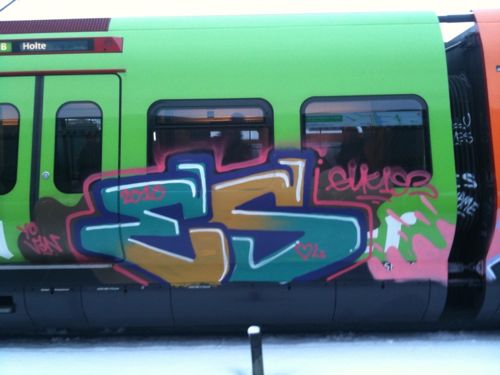 Sk
Sk
Month: February 2010
Michael Wutz @ Aurel Scheibler
But Why?
Group show with: Julie Nord, Camilla Thorup, Rasmus Bjørn og Michael Dumontier & Neil Farber.
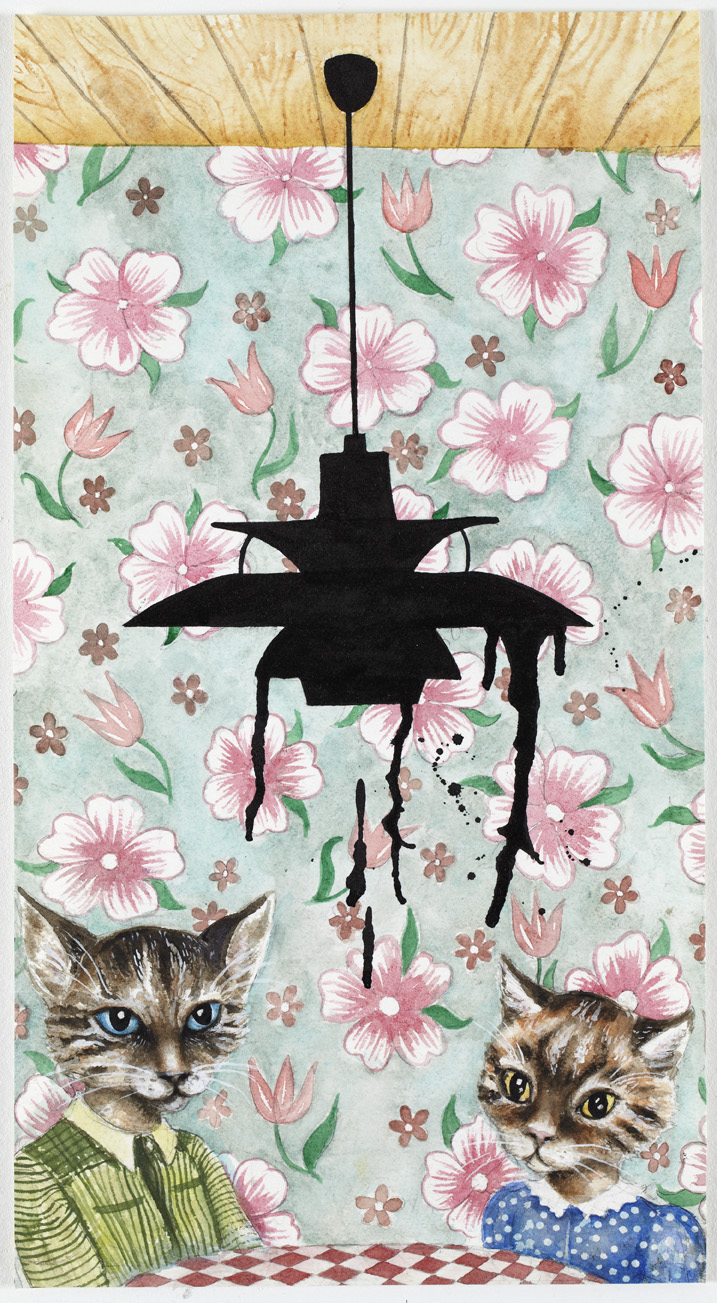
Portrait of a Lady @ LaViola Gallery
Gert & Uwe Tobias
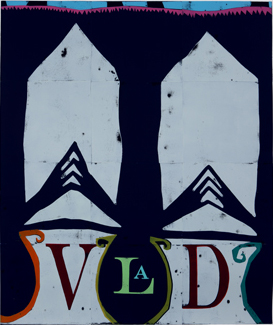
Gert & Uwe Tobias
Come and See Before the Tourists Will Do – The Mystery of Transylvania
Team is pleased to present an exhibition of new work by the Köln-based brothers Gert & Uwe Tobias. Entitled Come and See Before the Tourists Will Do – The Mystery of Transylvania, the exhibition will run from the 11th of February through the 13th of March 2010. Team Gallery is located at 83 Grand Street, cross streets Wooster and Greene, on the ground floor.
To date, the biographical details surrounding Gert & Uwe Tobias have been used as an entry point to their sophisticated, ultra-stylized and, at times, darkly humorous installations, which, through their incorporation of wall painting, watercolors, collages, vitrines containing altered books, type-writer drawings, ceramic sculptures, and large-scale wood cut prints frequently approach the status of the gesamkunstwerk. The fact that they are identical twin brothers, for example, seems to provide an insight into the fact that their primary mode of production is that of printmaking and that these works are produced in hand-made editions of two – never exactly the same but always alike. Much has also been made of their birth in the region of Transylvania, Romania, as though this fact makes it appropriate that they began their careers with a body of work inspired by (among other things) low-budget vampire movies. This biographical data, however, only provides a cursory introduction to an artistic practice that encompasses an ever-widening range of influences and intentions.
The title of this show, Come and See Before the Tourists Will Do – The Mystery of Transylvania, was initially used by the Brothers in 2004 as an umbrella for a body of work that could have served to advertise horror films had those filmmakers commissioned neo-constructivists to promote their fictions. The Brothers chose from a list of titles of American and British films about vampires. These titles were then used as the inspiration for a group of sumptuously rendered, vividly colored wood block prints. These large-scale “posters” – at the same time conservative, modernist artworks and knowing commentaries on the commerce of art making – enjoyed a status as rarified art objects that culled from sources as far ranging as the Bauhaus, vintage fashion magazines, travel posters, and fabric designs. The Tobias Brothers’ vampire posters were, to put it mildly, virtuosic displays of historical knowledge. In 2009, Gert and Uwe decided to return to the series, this time focusing on European horror films, leaving their titles in the source languages. The results will line the walls of Team’s main gallery space.
The Tobias’ introspective and oblique woodcuts lovingly embrace eccentric figuration, geometric abstraction, and the typographic. Presented with them are a series of collages made from cutting and recombining books and other printed matter. These collage/sculptures are shown inside two large-scale vitrines that occupy the center of the space, while Team’s second gallery will contain the “exhibition woodcut.” For each of their solos, the Brothers create a print that functions both as an autonomous artwork and as a promotional tool for the show itself. Surrounding this piece will be a number of drawings made by Gert and Uwe using typewriters and white sheets of paper.
The Tobias’ interest in folklore and regional mythologies provides a contextual framework for their exhibitions. Personal biography, cultural identity, and popular culture all play a role in their creation of an open ended visual dialect. They borrow freely from art historical and other cultural milieus in order to construct a fragmented array of material tropes, which are then subsumed into a whole through a precisely considered exhibition schema.
The Tobias Brothers have had solo exhibitions in the US at the Museum of Modern Art in New York and at the Hammer Museum in Los Angeles. Additionally, solo shows have been mounted by the Kunstmuseum in Bonn, the Bergen Kunsthall in Norway, the Kunstverein in Heilbronn, the Kunsthalle Wien, and the Franz Gertsch Museum in Switzerland. This is their second solo at Team.
JONAS DAHLBERG
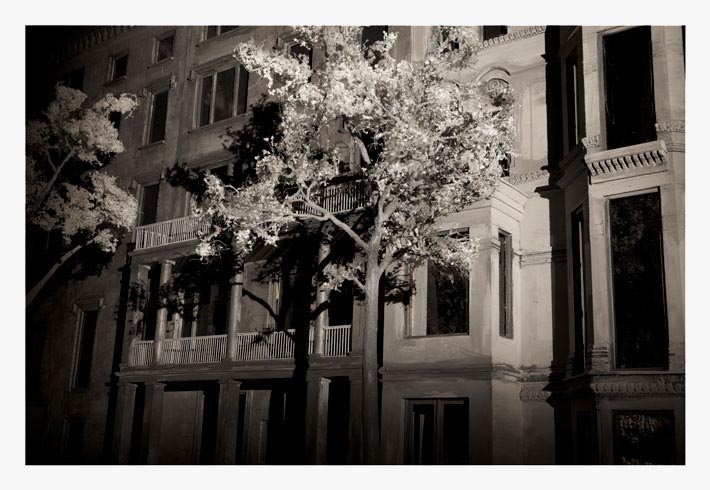
JONAS DAHLBERG
Galerie Nordenhake is pleased to announce Jonas Dahlberg’s second solo exhibition in Berlin. Here, the Stockholm based artist presents two recent video installations: “Three Rooms” (2008), View Through a Park, and his related photographic suite “View from a Street” (both 2009), along with his work from 1996-2003, “Safe Zones #1”. His works explore relationships between architectural and psychological space.
The artist is not interested so much in architecture in terms of rooms/enclosures but more as journeys, navigations, negotiations. “Three Rooms” is a 3-channel monitor presentation, depicting three rooms in a home: bedroom, living room and dining room. Over the course of 27 minutes all the objects and furniture dissolve, leaving an empty, lit room with no defining features. Dahlberg has found a way to eliminate objects that is slow and resembles a natural, organic process. The 3 screens work with a narrative structure more closely connected to architecture than film. The viewer moves from screen to screen as moving through rooms in a building.
In “View Through a Park” the viewer follows a single camera movement from the interior of one apartment, through an idyllic city park, to its facing apartment. Set at night, the dreamlike shot travels endlessly between these two buildings, transforming from a non-physical journey for the viewer through the park, to a furtive, intruding gaze within the private spaces. The photographic works suggest a surreptitious inventory and indexing of the exterior buildings. While the film is dreamlike, the photographs, taken at street-level, are grounded and factual. “View from a Street” returns to other themes recurrent in Dahlberg’s work – surveillance and voyeurism.
“Safe Zone’s #1” offers a dialog with these recent works by investigating themes such as the gaze, control and paranoia.
Jonas Dahlberg was born in Uddevalla, Sweden, in 1970, and currently lives and works in Stockholm. He has exhibited widely in many prestigious contexts. Selected solo exhibitions include: Galeria Foksal, Warsaw (2008), Neue Kunsthalle St. Gallen (with Jan Mancuska) and Frac Bourgogne, Dijon (2006), Moderna Museet in Stockholm and Bonner Kunstverein. Bonn (with Jan Mancuska) (2005) and Kunstverein Langenhagen (2003). He participated in numerous group exhibitions at Kunsthalle Wien and Kunstmuseum Stuttgart (2008), Leeum Samsung Museum of Art, Seoul (2007), Santa Barbara Museum of Art, Taipei Biennial, Calle Alcala 31, Madrid Spain (2006). He represented Sweden at the 26th Bienal de São Paulo and has participated in the Busan Biennial in 2004, the 50th Venice Biennial in 2003 and Manifesta 4 in 2002.
EBBE STUB WITTRUP
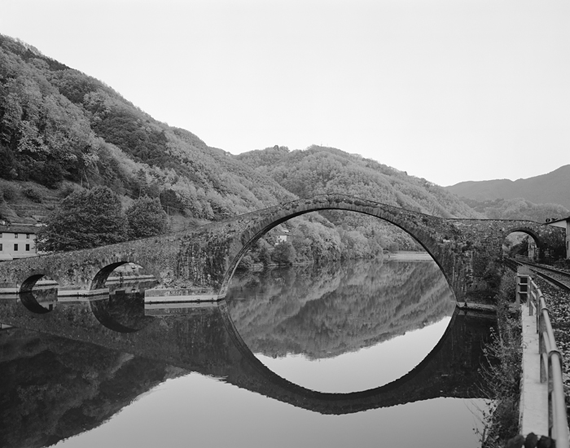
EBBE STUB WITTRUP//Burning in Water – Drowning in Flames
Scattered around Europe there are enigmatic, almost impossibly constructed bridges that hump their way across rivers, abysses and gorges. These bridges have been called Devil’s bridges and form the background for Ebbe Stub Wittrup’s (b. 1973) series Devil’s Bridges, which is being presented at the exhibition Burning in Water – Drowning in Flames at the Martin Asbæk Gallery.
The title of the exhibition, taken from a collection of poetry, is written as a chiasmus, in other words a juxtaposition of elements and words with opposite meanings. The title’s cryptic construction is just as mysterious as the mythological origins of the bridges, which despite their geographical differences are strikingly similar. A recurrent feature of the legends is that the builders had to enter into a pact with the Devil to complete the difficult structures. In return the Devil claimed the first soul to cross the bridge. The residents of the town therefore tried at first to fool him by sending pigs, goats and other non-human creatures across the bridge – but in vain.
The series Devil’s Bridges consists of eight photographs in black and white taken with a technical 4×5” large-format camera to enable an accurate perspectival reproduction. The pictures were shot at sunrise or sunset, when everything lies in shadow. Technically, the light is gauged according to the darkness, which means that the sky becomes bright and the bridge appears more clearly.
Besides the eight picturesque black-and-white photographs, the exhibition presents a 3-minute newly produced 16 mm film played out at the bridge of Céret entitled The 3rd Person, a neon work that bears the title of the exhibition, and half a meteorite
Robert Mallary
Copenhagen Graffiti
Coler::::
